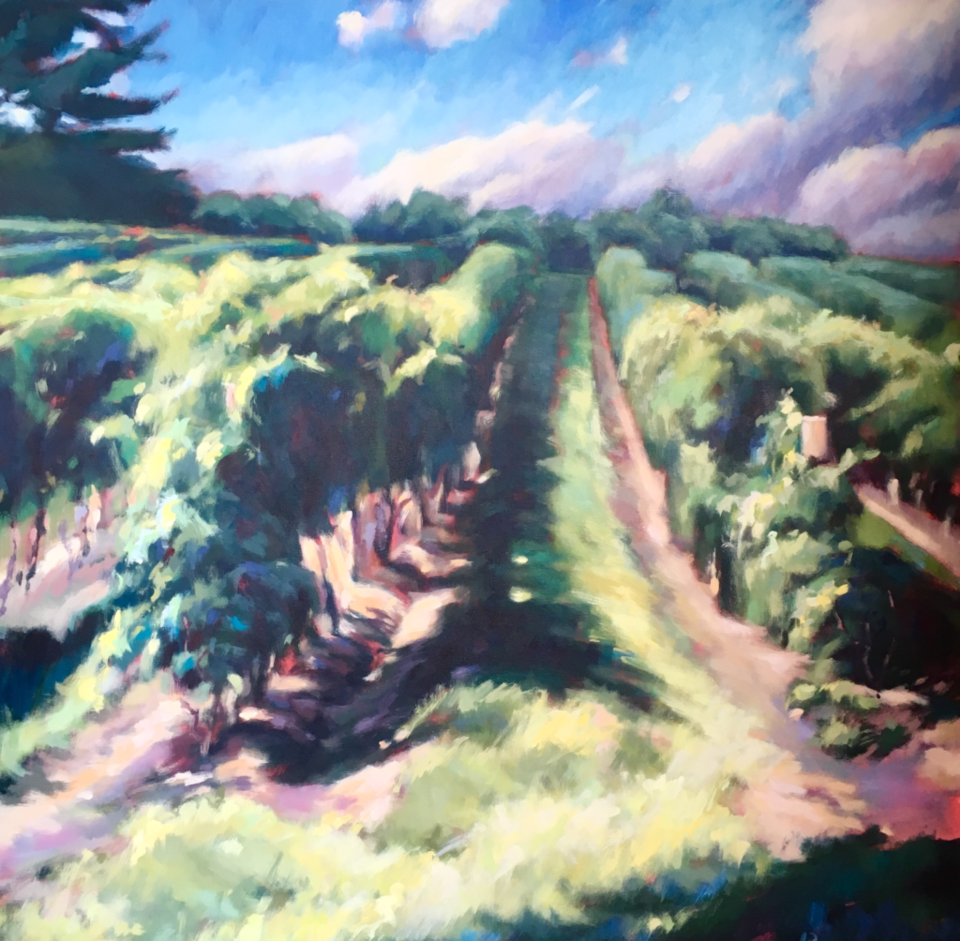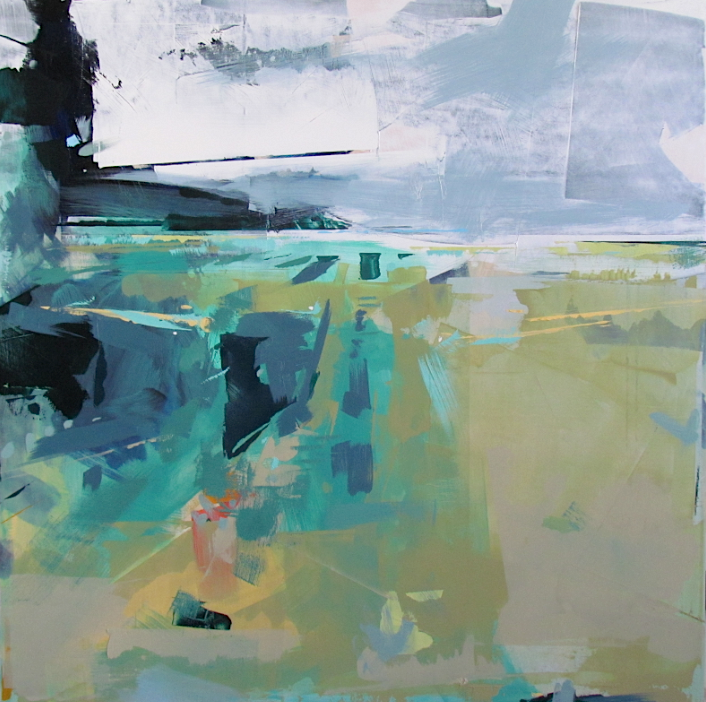
One artist paints in oils, the other in acrylic.
One artist’s works are impressionistic, the other abstract.
And one tends to choose shades dark and moody, the other leans toward bright, light and colourful.
Both draw inspiration from Niagara landscapes, and although they may see and interpret what they see differently, they paint with the shared goal of artists: hoping to capture something meaningful, something viewers will find speaks to them.
Dan Pigeon and Julie Ponesse are collaborating on Common Ground, an exhibit opening April 2 at the Niagara Pumphouse Arts Centre, with six paintings, each displayed side by side. A reception will be held Thursday, April 4, from 7 to 9 p.m.
The two artists have known each other for years. Pigeon grew up in Niagara, still has family here, and now lives and works in Toronto. Ponesse discovered Niagara-on-the-Lake as a visitor, lived here for about five years while she worked at Niagara University in the U.S., and now splits her time between NOTL and London, where she teaches philosophy at Western University. She likes to spend her summers in town working on sketches, and then paints from them while at home in London during the winter months.
Pigeon explains the exhibit’s name has multiple meanings — the most obvious, the “common inspiration” the artists have found in area landscapes and their shared awe of the unique light found in Niagara.
It’s the light that attracts her, says Ponesse — there is much that is unique about NOTL, but to the artist, it’s the quality of light that draws her to paint local landscapes. “It’s unlike any other, with possibly the exception of Italy. I don’t know whether it’s the water, or the escarpment — the reason doesn’t matter. I just see that pink light as it floats across the vineyard, and I think about how I would paint it.”
Viewers of the exhibit will be able to see the journey the two artists took to get to their finished paintings, which started with photographs of Niagara landscapes they had taken separately, and had planned to paint, said Ponesse.

Cutline: Dan Pigeon paints the same scene from the same photograph, using an abstract style and moody colours. (Photo supplied)
Each sorted through their images, choosing the ones that had meaning to them. They stayed away from the typical tourist destinations such as Niagara Falls, she said, and decided on six views that would speak to locals — among them vineyards, which are familiar to everyone who lives in or visits Niagara, as well as some beautiful images of farmers’ fields, and the Niagara River — and decided on six they would each then paint.
“We thought it would be interesting to work from the same images, in our own style, and then display them side by side to see how artists capture images differently, and also to see the similarities.”
Because they had to agree to some of the other’s photos, “we both had to work outside our comfort zones. This challenged us, and I’m excited to see how it al comes together.”
Others familiar with their work have been a little surprised, knowing how different their styles are — Pigeon’s is strong and graphic, with his moody colours, in contrast with the work of Ponesse who loves light and colour.
“You look at the paintings we’ve done and you can see the same image, but really different takes on that image,” she says.
It’s an indication that as artists “we’re not just trying to recreate a photo, we’re capturing its essence. We’re painting the same image, but we’re seeing it differently.”
Her experience with plein air painting is similar — there can be five to 10 artists all lined up facing the same view, she says, all looking at the same thing, but one artist might have as a focus some detail the others didn’t even notice.
“It tells you how much people see the world differently, yet we’re still very connected. There is still this universality between us.”
That holds true for the images captured for this exhibit, she says.
“At the base of each painting is the structure, the foundation, like the scaffolding of a building. It’s like taking a black and white photograph and adding the colour, the light and the detail, and they become very different.”
The process was one of self-discovery, she says, because “when we chose our photos, we didn’t necessarily get our way. Dan chose one with low contrast, a moody farmer’s field. I left it to the end to paint, knowing it would be difficult for me.”
She quotes musician David Bowie: “If you feel comfortable in the field you are working in, you’re not working in the right area.“
“It was a good challenge for me. It’s important to keep propelling yourself forward. It helps when you’re facing the next challenge, shifting gears and moving forward. I couldn’t just abandon the painting. I definitely feel rewarded that I accepted the challenge and that I’m prepared for the next one. I’ll be less fearful to take it on.”
She said it has helped to realize she doesn’t want to be too comfortable in the style for which her work is recognized. “I’ll always be after the sense of light, trying to get something to glow from within,” she says, but at the same time she relishes the idea of tackling something new.
Her next show is primarily figurative, “something new for me, but I’m carrying some of the confidence from this show forward to the next one.”
At the moment, though, she’s gearing up for the pumphouse exhibit, and the reception, which will give the artists the opportunity to see viewers’ reactions to their work.
During her days as a budding artist, she says, she used to be very self-conscious of her work leading up to the opening of a show, asking herself, “Is it good enough? Will people like it?”
Now, she’s more likely to want to know “Does it touch you, does it reach you, give you a feeling? Are you seeing what I saw, or something different?”
She enjoys the reaction of the viewers, but for different reasons — she knows what they see in her work is personal, drawing on their own past experience.
This exhibit, she imagines they will be remembering places they’ve been — maybe the common ground will be Niagara, or possibly they will be remembering somewhere completely different — all that matters is the art touches them, as the landscapes spoke to the artists who painted them.
“We keep saying these paintings are our collective love letters to Niagara,” she says.
Common Ground is at the pumphouse, until April 28.
The Niagara Pumphouse Arts Centre is at 247 Ricardo Street. It is a not-for-profit community-based organization celebrating its 25th anniversary.
For more information about events, including several events to acknowledge its milestone anniversary, visit www.niagarapumphouse.ca.


